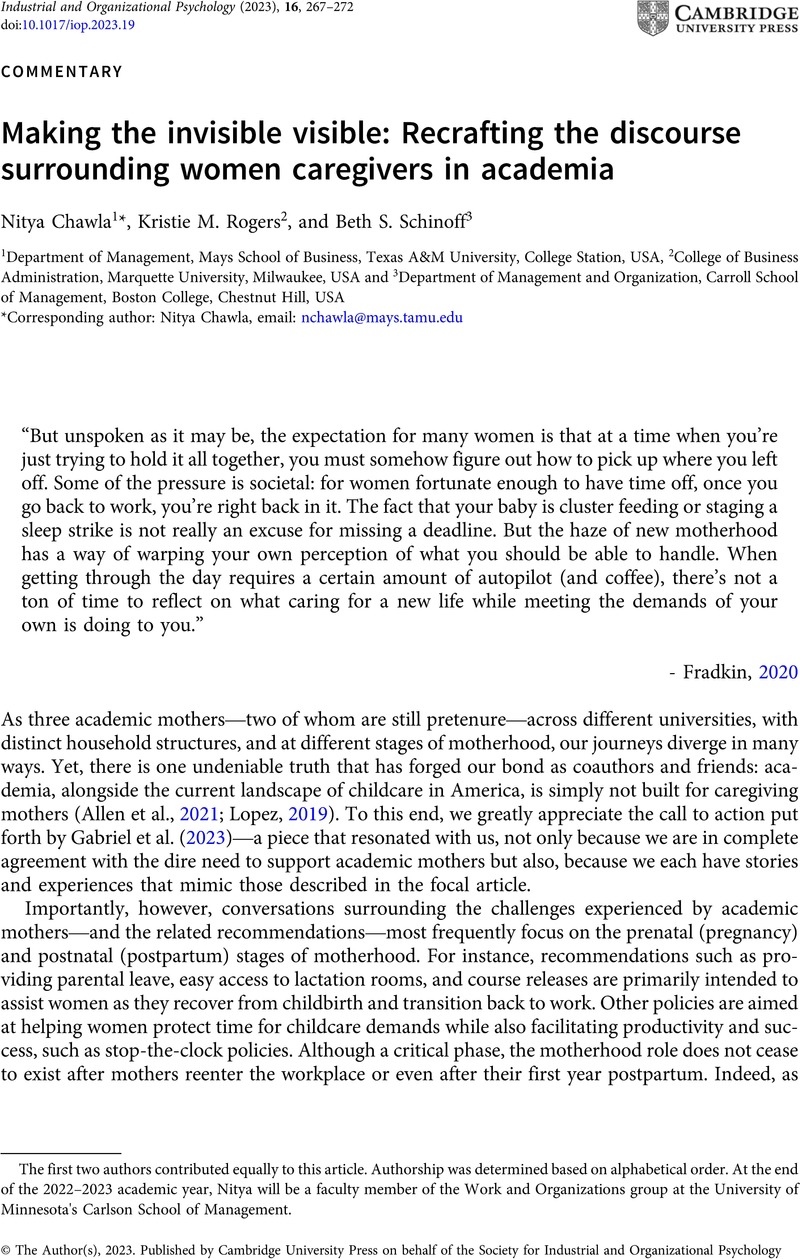No CrossRef data available.
Published online by Cambridge University Press: 09 May 2023

The first two authors contributed equally to this article. Authorship was determined based on alphabetical order. At the end of the 2022–2023 academic year, Nitya will be a faculty member of the Work and Organizations group at the University of Minnesota's Carlson School of Management.